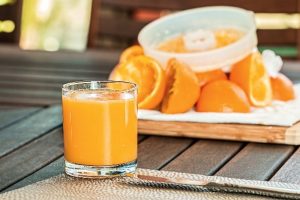What is E 952?
Sodium cyclamate, E 952 is a synthetic food sweetener with high sweetening power. It is about 30-50 times sweeter than sugar, comparing equal amounts of the two substances. [i]
Cyclamic acid and its sodium and calcium salts are chemical compounds whose sweetening capacity is relatively weak compared to other synthetic sweeteners. Therefore, they have generally been used in combination with saccharin in a 10:1 ratio, which also results in a taste closer to sugar and a higher sweetening capacity.
Cyclamates are the salts of cyclohexylaminosulphonic acid discovered by Sveda as early as 1937. It has been used as a sweetener (sodium or calcium salt) since the 1950s, becoming the most widely used artificial sweetener in the 1960s, leading to the launch of diet products.[ii]
How are cyclamatis obtained?
Cyclamates are obtained industrially by chemical synthesis. The raw material used in their synthesis is cyclohexylamine. It can be obtained by the hydrogenation reaction of aniline. Cyclohexylamine is treated either with sulphamic acid or with a certain tertiary and sulphur trioxide. The result is a quaternary ammonium salt (the anion being cyclohexylaminosulphonate). This reacts further with a hydroxide and the end product is cyclamate.
Another way of obtaining it is also with cyclohexylamine as raw material. This by sulphonation with chlorosulphonic acid in chloroform and treatment with barium hydroxide and sulphuric acid forms sodium cyclamate.1
Which foods can E 952 be added to?
According to the regulations in force, cyclamates can be used in the following products:
- Flavoured fermented milk products, including heat-treated products;
- Fruit and vegetables preserved in tins or jars;
- Fruit and vegetable preparations, except compotes;
- Extra jams and extra jellies;
- Jams, jellies and marmalades and sweetened chestnut puree;
- Other similar fruit and vegetable spreads;
- Other confectionery, including breath freshening drops;
- Fine bakery products;
- Table-top sweeteners in liquid form;
- Powdered table sweeteners;
- Table-top sweeteners in tablet form;
- Dietary foods for special medical purposes;
- Dietary foods for weight control, intended to completely replace the daily food intake or an individual meal (in whole or in part the total daily food intake);
- Fruit nectars,
- Flavoured drinks;
- Other alcoholic and spirituous beverages containing less than 15% alcohol, including mixtures of alcoholic and non-alcoholic beverages;
- Desserts;
- Food supplements supplied in solid form, including capsules and tablets and other similar forms, with the exception of chewable forms;
- Food supplements supplied in liquid form;
- Food supplements supplied in syrup or chewable form.[iii]
Are there any side effects from consuming the food additive E 952?
Long-term use of cyclamates can cause gastrointestinal disorders. Exceeding the daily dose may sometimes cause photosensitisation. Generally, ingested cyclamate is excreted from the body within 1-2 days. But there are also people in whom a large proportion of ingested cyclamate (60%) is metabolised. The resulting metabolites include cyclohexylamine.1
Cyclohexylamine (CAS # 108-91-8, EC # 203-629-0) is a human metabolite of the artificial sweetener cyclamate, which is produced by intestinal microflora. Some studies have suggested that it may have significant adverse health effects, for example, testicular atrophy, impaired spermatogenesis and bladder tumours in rats. It may also be a trace impurity from the production process. [iv]
In tests on rats, it was found to be present in the urine in varying amounts after a certain time. In animals and humans, the ability of bacterial microflora to convert cyclamate to cyclohexylamine varies over time for the same individual.
Experiments on humans and animals have not yielded conclusive results on the explanation of the changes observed in cellular and subcellular structures induced by this additive, nor on the mechanism of action of its metabolites – such as cyclohexylamine, cyclohexanone and cyclohexanol.
Ingested in large doses, cyclamate can cause diarrhoea, skin reactions, dermatitis, hives or oedema. Cyclohexylamine, which is the main metabolite of cyclamates, is formed mainly in the intestines under the influence of enterococci. It is 10 times more toxic than sodium cyclamate. It also has mutagenic and embryotoxic teratogenic effects. Due to both carcinogenic, mutagenic, teratogenic effects, in some countries such as the USA, cyclamates are not allowed in the diet. In others, such as Germany, Spain and Switzerland, they are allowed in moderate doses.1
Cyclamates are largely not metabolised by the human body and therefore there is a risk to aquatic organisms and the environment if wastewater treatment plants do not effectively remove them and their main metabolite: cyclohexylamine. Fortunately, treatment plants seem to be coping with their purification. However, sometimes cyclamates are still found in surface and marine waters. These substances appear to be susceptible to biodegradation, although this is not a rapid process in water, but is much faster in soil systems. This case is evidence that cyclamates will be taken up from the soil by plants. There is ample evidence of widespread environmental contamination by cyclates, including surface and groundwater, marine and coastal waters, although these are generally at a lower level. A few studies have also detected cyclates in drinking (tap) water, rainwater and atmospheric samples. However, from the available data, cyclamates do not appear to be very toxic to aquatic organisms, especially considering current environmental concentrations.4
What are the characteristics of E 952 additive?
Sodium cyclamate (E 952) is synonymous with: cyclamate, sucaryl or the sodium salt of cyclamic acid. Its chemical name is: sodium cyclohexanesulphamate, or sodium cyclohexyl sulphamate.
Their density on average is 1.83 g/cm3 . Sodium cyclamate is slightly soluble in water (at 20º C it dissolves 200 g/l water) but insoluble in alcohol, ether, benzene and chloroform. The pH of aqueous solutions of cyclamates of 10% concentration, shows values of 5.5-7.5. The sweetening power depends on the nature of the food into which it is incorporated.
Sodium cyclamates have a high thermal stability (500 º C); for this reason they are used as sweeteners for foods processed at high temperatures and varying pH values (2-10).
The table below shows the characteristics of E 952 additive according to Regulation (EU) No 1129/2011.
| SODIUM CYCLAMATE | |
| Chemical formula | C6H12NNaO3S, and the dihydrate form C6H12NNaO3S-2H2O |
| Molecular weight | 201,22 calculated on the anhydrous form
237,22 calculated in relation to the hydrated form |
| Composition | Content not less than 98 % and not more than 102 % on the dried basis
Dihydrate form: not less than 84 % on the dried basis |
| Description | White, odourless crystals or crystalline powder. Approximately 30 times sweeter than sucrose |
| Loss on drying | Not more than 1% (105 °C, 1 hour)
Not more than 15,2% (105 °C, 2 hours) for the dihydrate form |
| Selenium | Not more than 30 mg/kg (expressed as selenium on dry weight basis) |
| Arsen | Not more than 3 mg/kg expressed on dry weight basis |
| Plumb | Not more than 1 mg/kg expressed on dry weight basis |
| Cyclohexylamine | Not more than 10 mg/kg expressed on dry weight basis |
| Dicyclohexylamine | Not more than 1 mg/kg expressed on dry weight basis |
| Aniline | Not more than 1 mg/kg expressed on dry weight basis |
According to FAO/WHO, the daily intake of E 952 is 11 mg/kg body weight.[v]
Why is it necessary to use cyclomats?
Cyclamates are used in the food industry as sweeteners. Although their sweetening power is relatively low compared to other sweeteners, they are mainly used in the processing of some food products due to their high stability both at high temperatures (500 º C) and in a wide pH range from 2 to 10.
The use of cyclamates is also advantageous because at low concentrations they do not have an unpleasant aftertaste. However, when used in high concentrations, in addition to their sweet taste, an unpleasant, foreign aftertaste is also present.
For the reasons given above, cyclamates are used in combination with other sweeteners, for example saccharin, with which they show a visible synergism (10:1, cyclamate:saccharin).
The use of cyclamates is a must because they can replace carbohydrates in the diets of diabetics, the obese or people controlling their body weight. Unlike other sweeteners, cyclamates have the advantage of processing food at high temperatures. Cyclamates can also be used in the manufacture of certain medicines to mask their bitter taste.1
The benefits of cyclists are:
Teeth-friendly: its use does not cause tooth decay.
Conclusions and Legislative Regulations E 952
Cyclamates, E 952 are regulated at European level by Regulation (EU) No 1129/2011 of 11 November 2011 amending Annex II to Regulation (EC) No 1333/2008 of the European Parliament and of the Council by establishing a Union list of food additives[vi] .
Cyclamen have zero glycemic index being suitable for diabetics without affecting blood sugar and insulin levels, they have zero calories: as they are not metabolised to produce energy in the body and do not cause tooth decay.
Author: dr.ing. Ancuta Fulvia Manolache
Bibliographical references
[i] Elena Orănescu, Food Additives-necessity and risk, SemnE Publishing House, 2005, Bucharest
[ii] Raluca Stan, Natural and synthetic food additives, Printech Publishing House, 2007
[iii] Commission Regulation (EU) No 1129/2011 of 11 November 2011 amending Annex II to Regulation (EC) No 1333/2008 of the European Parliament and of the Council by establishing a Union list of food additives
[iv]Review and synthesis of data on the potential environmental impact of artificial sweeteners Agriculture and Environment Research Unit University of Hertfordshire, UK Kathy Lewis & John Tzilivaki, APPROVED: 15 January 2019 doi: 10.2903/sp.efsa.2021.EN-6918, www.efsa.europa.eu/publications EFSA, Supporting publication 2021:EN-6918
[v] https://apps.who.int/food-additives-contaminants-jecfa-database/Home/Chemical/995
[vi] COMMISSION REGULATION (EU) No 1129/2011 of 11 November 2011 amending Annex II to Regulation (EC) No 1333/2008 of the European Parliament and of the Council by establishing a Union list of food additives
8 https://pixabay.com/ro/photos/suc-proasp%c4%83t-de-portocale-stors-1614822/


